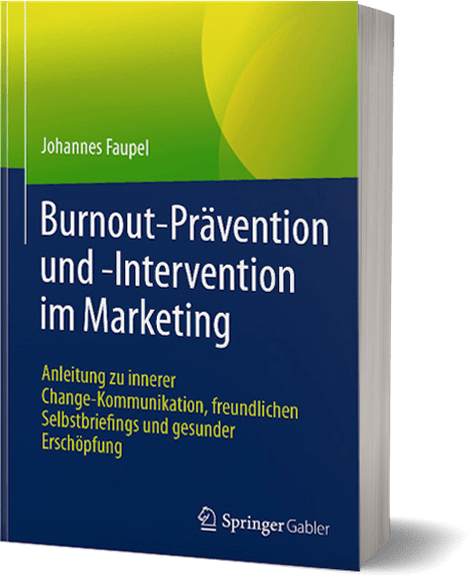Milton H. Erickson: Homage to the pioneer of hypnotherapy
Milton Hayland Erickson was the founder of modern hypnotherapy.
The American psychiatrist lived from December 5, 1901 to March 25, 1980. Thanks to Erickson, hypnosis found its way into modern psychotherapy. Milton Erickson was committed to the dissemination of hypnotherapy as editor of the American Journal of Clinical Hypnosis and founded the American Society for Clinical and Experimental Hypnosis.
What is hypnosis? Short explanation
Hypnosis is derived from hypnos (ancient Greek Ὕπνος Hýpnos = sleep). In fact, however, a hypnotherapeutic intervention according to Erickson is not about putting the patient to sleep and suggesting something to him in his absence (lat. subgerere = to put under, to put in). In fact, hypnosis works with the phenomenon of attention.
Milton Erickson was a person who worked tirelessly on himself
Unlike psychotherapeutic theorists, Erickson was a person who dealt with many health problems throughout his life. He developed his interventions on himself, that is, on the living object. Thus Dr. Gunther Schmidt, founder of the hypnosystemic approach, reports on Erickson’s first experiences with hypnosis and self-hypnosis.
Milton Erickson: from coma to conscious life
Even the young Milton Erickson was marked by illness. Color blindness and dyslexia were just two of his limitations.
As a young person he wrote articles for magazines. It was here that he had his first autohypnotic experiences:
As a dyslexic, he had problems recognizing letters. He was able to overcome these problems only through intensive practice, until he recognized the letters in the form of visual hallucinations.
In 1919 he became seriously ill with polio. He was almost completely paralyzed and close to death.
His parents, simple farmers, did not have the money for an expensive therapy.
- As 18-year-old Erickson grew progressively worse, his parents called some country doctors to their home. These said to the parents: Your son will not live to see the next morning.
- When Erickson heard this (as Gunther Schmidt tells it), he was shocked by the callousness with which his parents were informed about his supposedly imminent death.
- With the last of his strength, he asked his parents to turn his bed so that he would see the rising sun the next morning.
- Since the room was too small to turn the bed completely, a mirror was set up. Erickson saw the sunrise in the mirror.
He then fell into a coma.
When he awoke again, he was completely paralyzed from the neck down.
These experiences created in Milton Erickson an irrepressible will to live. Unable to move, he concentrated on observing. He studied people, their behavior, their communication.
Then the thing with the rocking chair happened. Dr. Gunther Schmidt also reports this in detail.
In the rocking chair Erickson began to develop hypnotherapy
Erickson’s farm people were out in the fields – young Milton, who could not move, they put him in a rocking chair and tied him there because he could not hold himself. Every now and then someone from the field would come up to him to check on him and rock him a little.
One day, however, they forgot about it.
Erickson, however, was eager to get closer to the window with the rocking chair.
After a while, he noticed how the chair began to move very gently. At first he thought it was an earthquake, but then it was certain: Milton H. Erickson had just performed one of the decisive interventions on himself.
His attention was so strongly focused on the longing of the movement towards the window that something happened in his body.
Erickson discovered the principle of ideomotor activity
In fact, through intense visualization and hallucinatory work, he was able to re-activate his paralyzed muscles.
Discoveries
Erickson turned against conventional suggestive hypnosis. This was predominant in psychotherapy until the middle of the 20th century.
Overview of Erickson’s intervention techniques:
- indirect suggestions on
- interspersed suggestions
- metaphors
- hypnotic phenomena such as arm levitation (ideomotor signaling)
- evocation of implicit memory contents, procedural knowledge and episodic experiences
- therapeutic tertium
- “The unconscious protects the conscious.” Principle of reframing symptoms
- Use of symptoms, amnesia or dissociation to protect the person
- Utilization approach (principle of pacing and leading) in contrast to the pathology orientation and deficit orientation of psychoanalysis and behavior therapy
- Introduction and emphasis on resource and solution orientation
Erickson: more practitioner than theorist of hypnotherapy
Milton H. Erickson was much more interested in the individual than in doctrines. That is why there are numerous books about him, but not by him. Directly handed down from Erickson are numerous video recordings and transcripts of his legendary therapy.
Constant gathering of information about the clients.
William Hudson O’Hanlon describes in his book “Psychotherapy without Dogma: Cornerstones: Fundamental Principles of Milton H. Erickson’s Therapy and Hypnosis: BD 3” –
“One can see from Erickson’s work that he continued his diagnostic process throughout the course of therapy. Most therapists create their diagnostic assessment at the beginning of therapy and base the rest of their interventions on this initial diagnosis. Erickson rarely used psychiatric diagnoses to describe patients because he considered these descriptions too general on which to base therapy. He seemed to have a greater interest in uncovering his patients’ patterns and forms of response. What would these respond to?”
This quote describes with how much appreciation and openness Milton Erickson approached patients.
He recognized and respected people’s perceptions of their uniqueness.
Every individual experiences everything differently – that’s why standardized procedures in psychotherapy are of little use
The perception of the individual changes constantly:
- In the context of experiences.
- In the context of expectations.
- As a result of therapeutic interventions
Books about the interventions of Milton H. Erickson
My Voice Will Go with You: Teaching Tales of Milton H. Erickson: The Teaching Tales of Milton H. Erickson
Milton H. Erickson’s collected cases
Milton Erickson Lives! (Learning to Live, Vol. 244): A Personal Encounter. Unique color photographs and original transcripts.
Therapists of the 20th and 21st centuries influenced by Milton H. Erickson.
Erickson influenced many representatives of modern psychotherapy:
- Gregory Bateson
- Jay Haley
- Paul Watzlawick
- Gunther Schmidt
- John Grinder
- Steve de Shazer
- David Cheek
- Ernest Rossi
- Jeffrey Zeig
- Steve and Carol Lankton
- Michael Yapko
In September 1978, the Milton Erickson Society for Clinical Hypnosis, Germany (M.E.G.) was founded.



